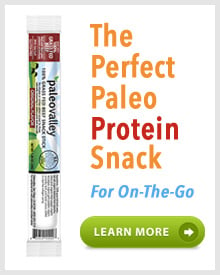Discover Why This Type Of Butter Actually Slashes Heart Disease Risk…
As a paleo adherent, you may find it difficult to believe that I would ever advocate eating dairy. It’s true, I do. But, not all dairy. I began my wellness journey as a strict proponent of the paleo diet after receiving a Masters Degree in Holistic Nutrition. After five years of personal experience, I realize that sometimes there is value in stepping outside the “paleo box”.
Grass-fed butter is one of those times. It is one of the healthiest sources of fat on the planet. As with all other foods, finding a high quality source is key, because the nutrient profile of butter will vary depending on what cows are fed. Simply put, grass-fed cows yield far more nutrient-rich butter than their conventionally raised counterparts.
Here are a few reasons to consider regularly consuming grass-fed, raw butter (rather than that from conventionally-raised cows) taken from an article in Natural News, Science Study: Grass Fed Butter Eaters Slashes Heart Risk in Half.
Read the full article here.
Here are some of the incredible nutrients found in grass-fed butter…
- The fatty acids it contains (like CLA) are very good for health, especially gut health. CLA is known to help fight intestinal candida.
- Grass-fed butter contains 5 times more CLA than butter from grain-fed cows.
- Grass-fed butter can also contain high levels of Vitamin K2 (not just “Vitamin K”) which is good for repairing intestinal Tight Junctions, thus helping heal Leaky Gut.
- Butterfat is highly complex. It contains about 400 different fatty acids, and a decent amount of fat-soluble vitamins….As it turns out, many of the fatty acids in butter can affect our physiology and biochemistry in some way, leading to major health benefits.
- Butter from grass-fed cows is also much higher in Omega-3 fatty acids and vitamin K2, compared to butter from grain-fed cows.
But what about saturated fat? According to this article,
“…two massive review studies were published recently, one in 2010 and the other in 2014. Both included hundreds of thousands of people.
These studies clearly showed that there is no association between saturated fat consumption and heart disease.”
And what can grass-fed butter do for heart disease risk?
“In countries where cows are largely grass-fed, the people who eat the most butter seem to have a drastically reduced risk of heart disease.The relationship between full-fat dairy consumption and heart disease seems to depend on the country in which the study is performed.”
According to an article entitled Science: Grass-Fed Butter Eaters Have Fewer Heart Attacks on eatlocalgrown.com…
“An impressive study on this was published in the American Journal of Clinical Nutrition, in the year 2010:
Smit LA, et al. Conjugated linoleic acid in adipose tissue and risk of myocardial infarction. American Journal of Clinical Nutrition, 2010.
This study looked at the levels of CLA in the fat tissue of 1813 non-fatal heart attack patients, and compared them to 1813 similar subjects who had not gotten heart attacks.”
It was found that…
“the people who ate the most (grass-fed butter) were 49% less likely to experience a heart attack, compared to those who ate the least.”
and…
“Another study from Australia showed that people who ate the most full-fat dairy had a 69% lower risk of heart disease than people who ate the least.”
Read the full article here.
My take on this:
Grass-fed butter is an incredibly nutrient-dense food that has been used to cultivate vibrant health worldwide for many years. According to Dr. Weston Price, author of Nutrition and Physical Degeneration, many indigenous cultures whom he studied in the 1930’s, regularly consumed grass-fed butter and enjoyed supreme health. It wasn’t until the demonization of animal fats in the early 1960’s that Americans lost touch with this superfood.
Due to our government’s unwarranted accusations that animal products (such as grass fed butter) caused heart disease, rates of butter consumption declined drastically. Between the years 1920-1960, it plummeted from 18 pounds/person per year to 4 pounds/person per year. In this same period that the rate of heart disease rose abruptly. In other words, grass-fed butter consumption proved inconsequential to heart disease.
For those of you who do not have a dairy allergy, I highly recommend incorporating raw, grass-fed butter into your daily diet. Not only can it reduce your risk of many modern day diseases, but it can also aid in weight loss. This is due to its wealth of short and medium chain fatty acids that can be burned for quick energy.
My favorite ways to use raw, grass-fed butter include: sautéing vegetables, “bulletproof coffee”, or melting it into your decaf chai tea for a morning, milky beverage. For best results, please choose only high quality, grass-fed raw butter.
Here’s to a delicious way to lower your risk for heart disease!









